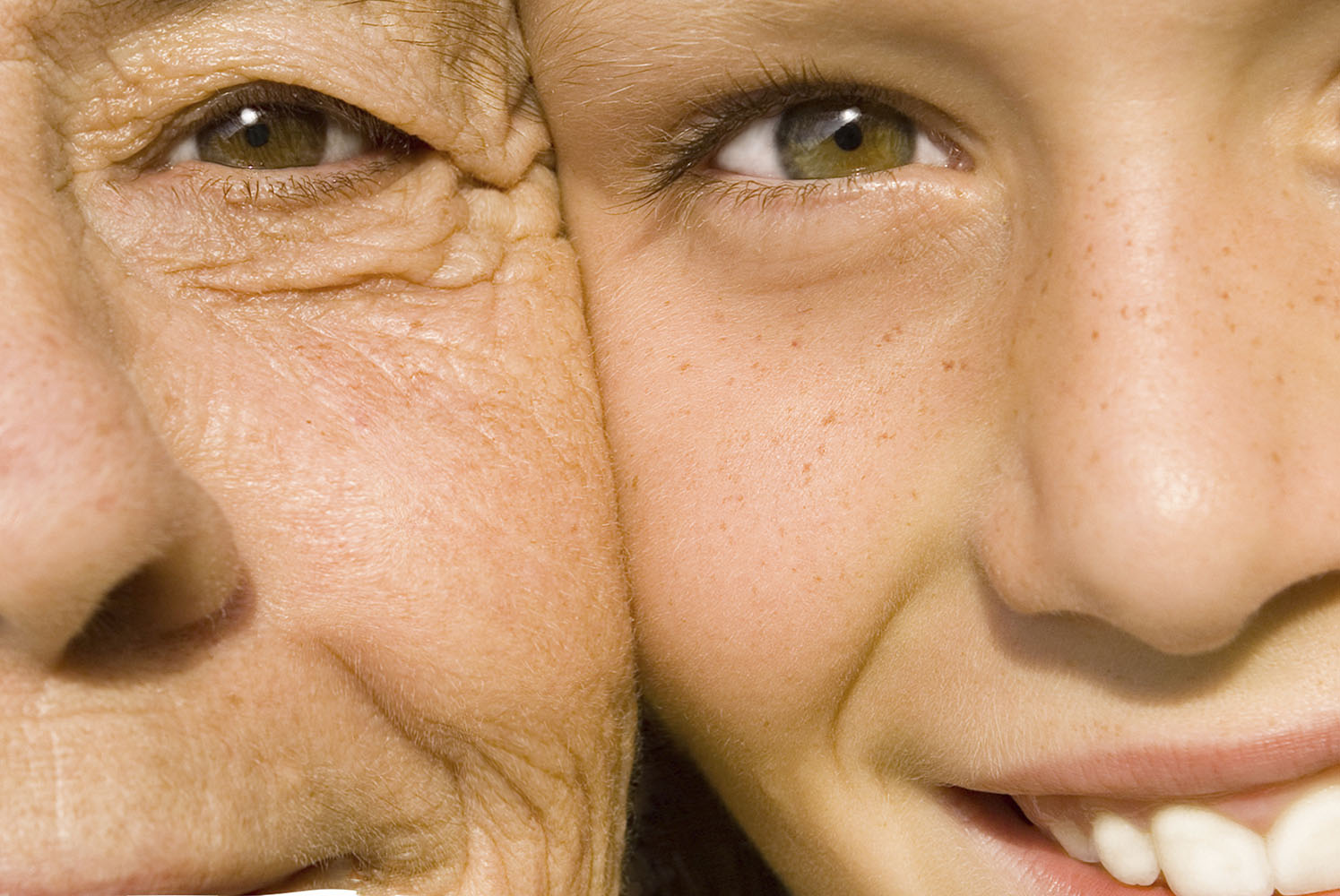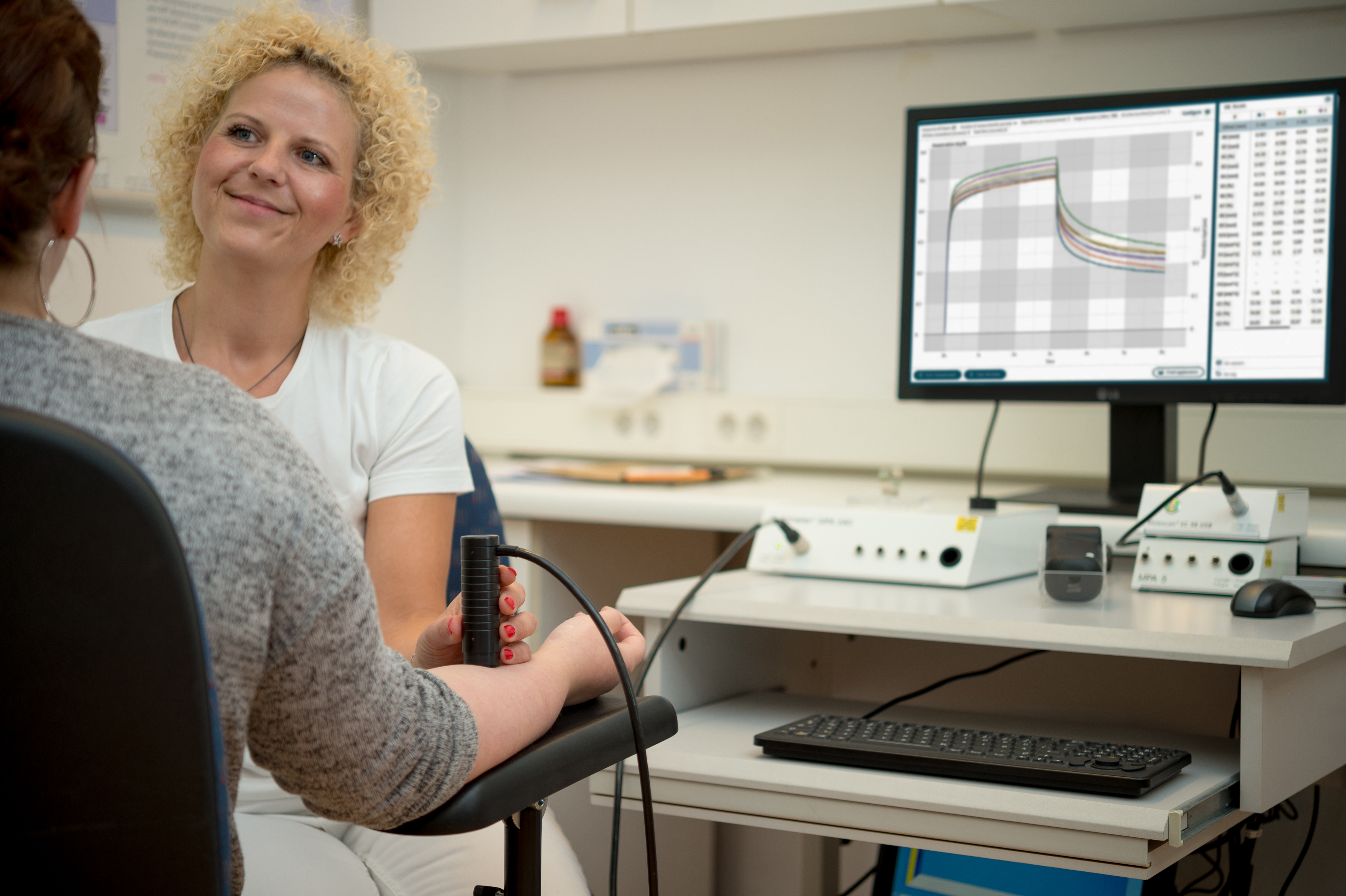Description
Cutometer® Dual MPA 580
The World's Most Established Elasticity Measurement by Suction
For more than 30 years elasticity measurements with the Cutometer® have been recognized as standard in cosmetology and have been used to support the latest discoveries in this field. Due to its precision and ease of use compared to other elasticity measurement methods, the Cutometer® is mentioned in most studies on this subject worldwide.
The new software MPA CTplus simplifies the work and offers additional benefits.
Measurement Principle
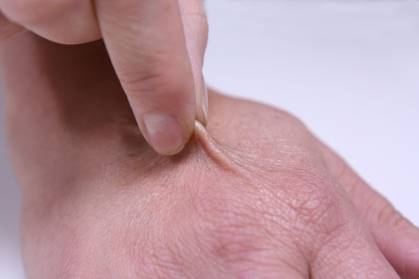
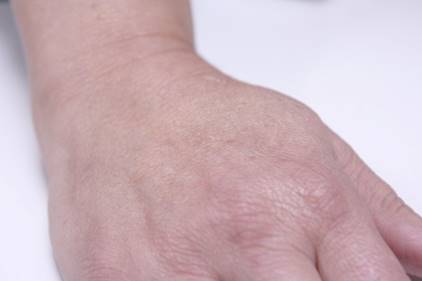
The measuring principle of the Cutometer® is based on the suction method, where negative pressure deforms the skin mechanically. The pressure is created in the device and draws the skin into the aperture of the probe and after a defined time, releases it again.
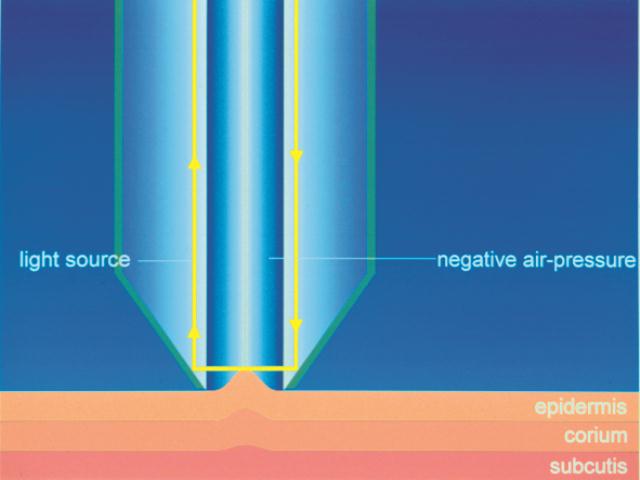
Inside the probe, the penetration depth is determined by a non-contact optical measuring system. This optical measuring system consists of a light source and a light receptor, as well as two prisms facing each other, which project the light from transmitter to receptor. The light intensity varies due to the penetration depth of the skin. The resistance of the skin to the negative pressure (firmness) and its ability to return into its original position (elasticity) are displayed as curves (penetration depth in mm/time) in real time during the measurement. From these curves a variety of interesting measurement parameters can be calculated related to elastic and visco-elastic properties of skin surface and skin aging.
The typical shape of a curve of human skin is based on the different forces of elastin and collagen in the skin. Elastin is responsible for the flexibility of the skin whereas collagen’s main task is to keep the skin in shape.
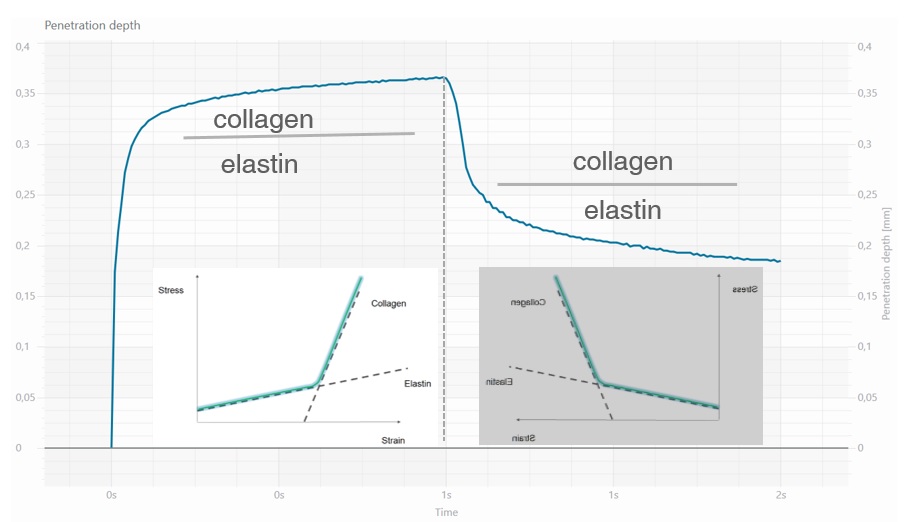
The first, very straight part of the curve is shaped by the proportion of elastin in the skin as it easy to displace and very flexible. When skin starts to “creep” inside the probe, the collagen has taken over. It is stronger and resists the mechanical force better. Immediately after the pressure of the device has ceased, the collagen start to bring skin back to its original shape. Therefore in young skin with fresh collagen, the skin instantly returns more closely to its original position than in aged skin. In the end, eventually the elastin sees to the complete recovery of the skin.
Advantages of the Cutometer®
- Worldwide established suction method to look at skin's elasticity and its biological age with a broad range of studies.
- The measurement (behavior of the skin during suction and relaxation) is monitored as instant live curves on the screen.
- The small, convenient size of the probe allows successful measurement of skin areas that are difficult to reach.
- The probe contains an elastic spring that provides constant pressure of the probe on the skin.
- The probe can be delivered with several aperture sizes (2, 4, 6 and 8 mm Ø) to fit different skin sites and different study requirements. The Cutometer® dual MPA 580 can feature two elasticity measurement probes with different aperture Ø at the same time.
- The probe head can easily be cleaned after each measurement.
- The Cutometer® MPA 580 is at the same time a Multi Probe Adapter system and can be used with the Sebumeter® and up to 4 other probes of your choice.
Measurement Parameters
The settings in the MPA CTplus software are flexible and set by the user according to different applications (suction time, relaxation time, pressure/pressure rate, repetitions, etc.). The programme allows the calculation of a lot of interesting parameters from the different portions of the measurement curve during suction and recovery.
Most measurements in literature have been performed in mode 1 (full suction followed by complete relaxation).
Here a short overview:
R-Parameters (extremely well documented in literature for more than 30 years)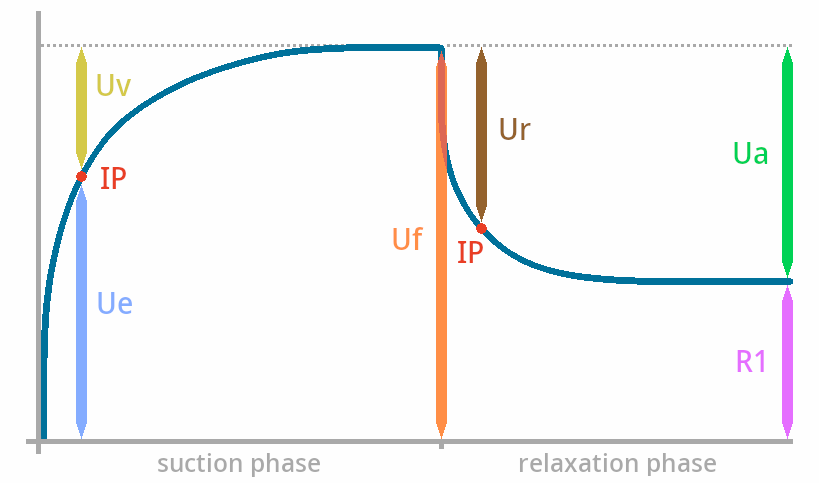
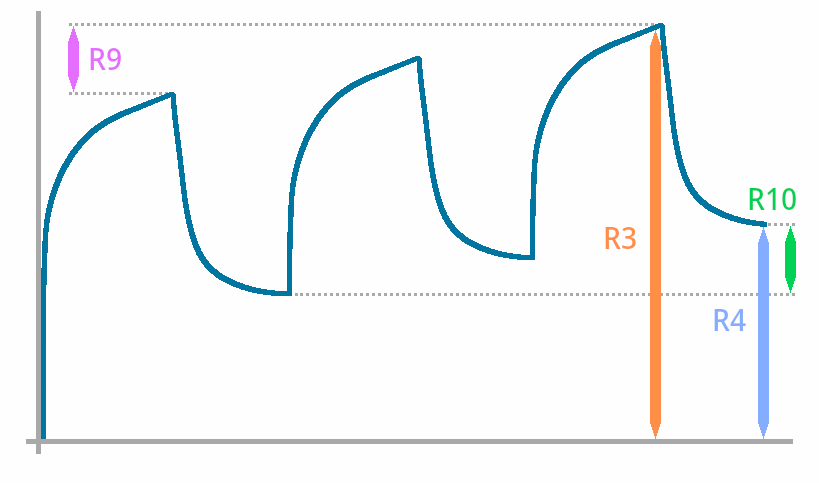
- R0: Uf pliability/firmness mm (amplitude at the end of the suction phase)
- R1/R4: ability of the skin to recover its initial state (residual deformation in mm at the end of recovery)
- R2: visco-elasticity in % (resistance to the mechanical force versus ability of recovery)
- R3/R9/R10: Tiring effects in mm (Fatigue) visible for repeated suction/recovery circles
- R5: net elasticity in %: Ur/Ue = elastic part of the suction phase vs. immediate recovery during relaxation phase
- R6: Uv/Ue Portion of the visco-elasticity of the curve during suction phase in %
- R7: Ur/Uf proportion of the immediate recovery compared to the amplitude after suction in %
- R8: Ua Total recovery after the pressure is cut off in mm
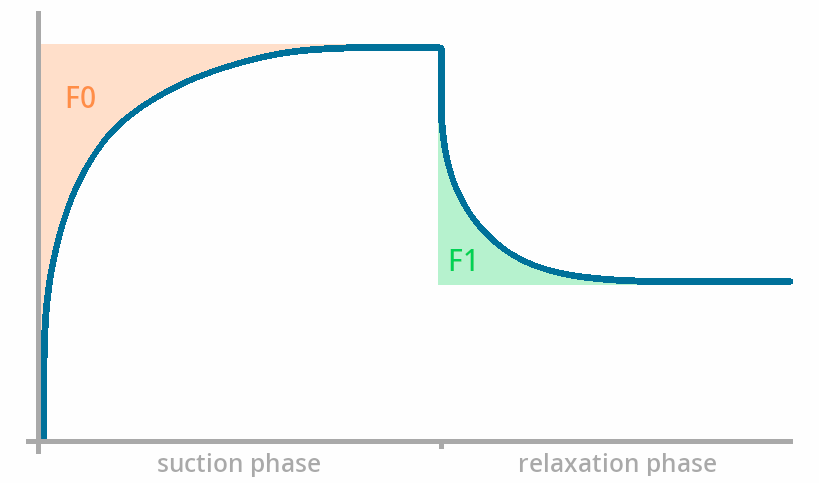
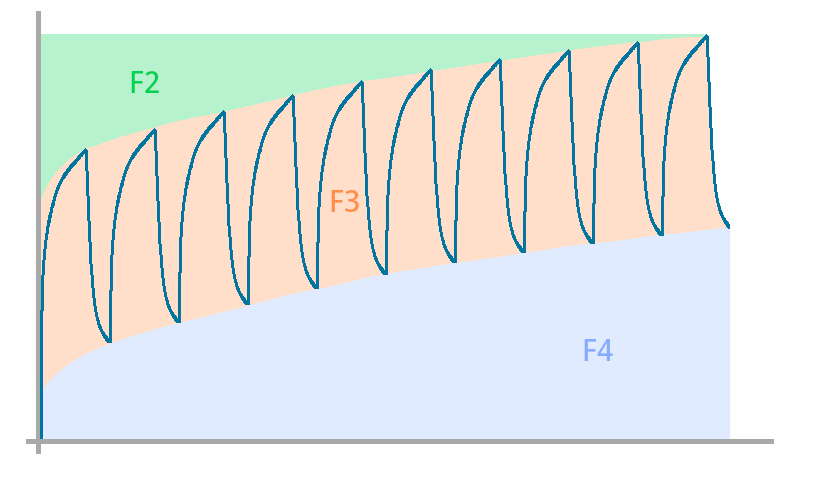
- F1: Area above the curve during suction phase. The more elastic, the less area there is.
- F2/F3/F4: “Fatigue” + “Skin Energy”


- Q0: Maximum recovery area
- Q1: Total recovery (overall elasticity) - (QE + QR)/Q0
- Q2: Elastic recovery - QE / Q0
- Q3: Viscoelastic recovery - QR / Q0
New interesting aging parameters for mode 2 and 3 (gradually decreasing pressure after suction):
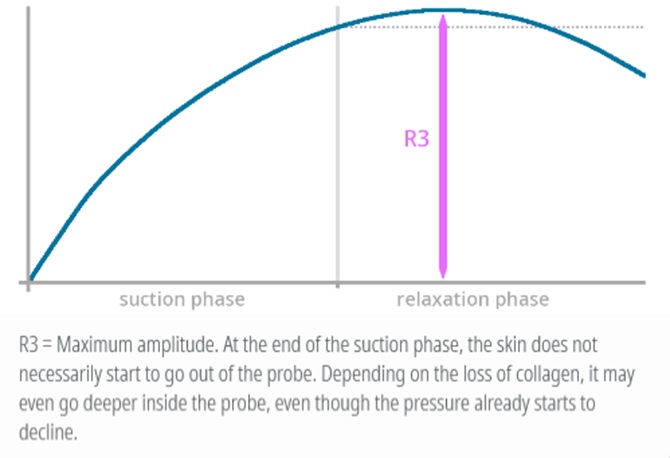
Different from mode 1, in these modes at the end of the suction phase, the skin does not necessarily start to leave the probe. Depending on the loss of collagen, it may even go deeper inside the probe, even though the pressure already starts to decline as the collagen may not be strong enough to start to bring skin back into its original shape with the given power. R3 is the maximum amplitude in mm.

R4 = Maximum collagen power: Describes when the decreasing pressure is low enough so that the collagen can finally start to bring the skin out of the probe and begin the recovery. The corresponding distance in the pressure curve is expressed as proportion to the maximum pressure (in %). Young skin with high collagen power has a higher value for R4 than older skin with decreased collagen power.
Fields of Application
The elasticity measurement with the Cutometer® is the basic measurement for all cosmetic applications.
- It is indispensable for formulation, efficacy testing and claim support for all kinds of cosmetic products.
- Typical claims (examples) substantiated with the Cutometer®: firmness enhancing, lifting, toning, anti-aging, improves skin elasticity, rejuvenating, against skin fatigue/slackness, improves cellulite/stretch marks, improves softness (e.g. callus), improves stiffness/hardness (e.g. scar tissue), and more.
- Important in dermatological basic research in humans and animals.
- Other materials like food, textiles can also be assessed.








